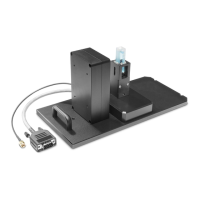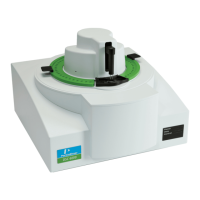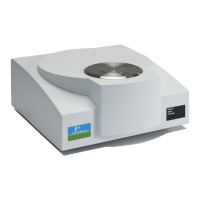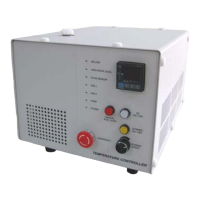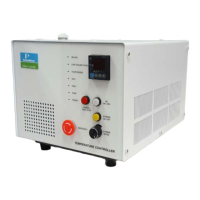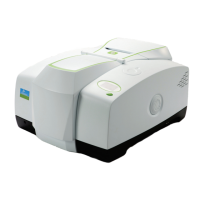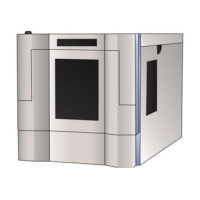An Overview of the Spectrometers . 27
Power switch and communications ports
The power switch, AC power cable connector, and communications ports are on the rear
of the instrument. The power switch is marked I/O (on/off).
NOTE:
It can take the Spectrum 100 FT-IR and Spectrum 100N FT-NIR spectrometers up
to two hours to equilibrate when switched on after being switched off overnight.
To save time, we suggest that you leave the spectrometer switched on at all
times.
Optical system
Usually the main cover of the instrument is closed, but to perform most maintenance
tasks, the cover has to be open. When you do this, a safety interlock automatically
switches off the power. However, the instrument should be disconnected from the mains
before opening the main cover for maintenance. Under the cover is the optical system of
the instrument.
Consistent, reliable performance is achieved by having few moving or adjustable parts,
and by extensive insulation of the optical system from the effects of humidity and
vibration.
Stability of the optical system
The entire optical system is purged and sealed at the factory. A supply of desiccant
placed within the system removes any water vapor and carbon dioxide that may enter. A
humidity sensor is fitted, which warns you when the desiccant needs changing.
In the Spectrum 100 FT-IR, KBr or CsI windows separate the sample compartment from
the purged optical system (In the Spectrum 100N FT-NIR, these windows are CaF
2
). You
can purge the sample compartment with dry air or nitrogen. Either one removes water
vapor; however, nitrogen is preferable because it also removes atmospheric carbon
dioxide.
WARNING
Do not use a flammable gas to purge the Spectrum 100 FT-IR or
Spectrum 100N FT-NIR spectrometers. The instrument contains a hot
source, and a fire or explosion will result. Only use clean, dry, oil–free
nitrogen or air to purge the instrument.
The optics are kinematically mounted to ensure accurate positioning and to make them
rugged. The interferometer is enclosed and mounted on anti-vibration mounts to guard
against air and bench borne disruptions. The interferometer uses very low-friction point
bearings and a frictionless electromagnetic drive to ensure long life.

